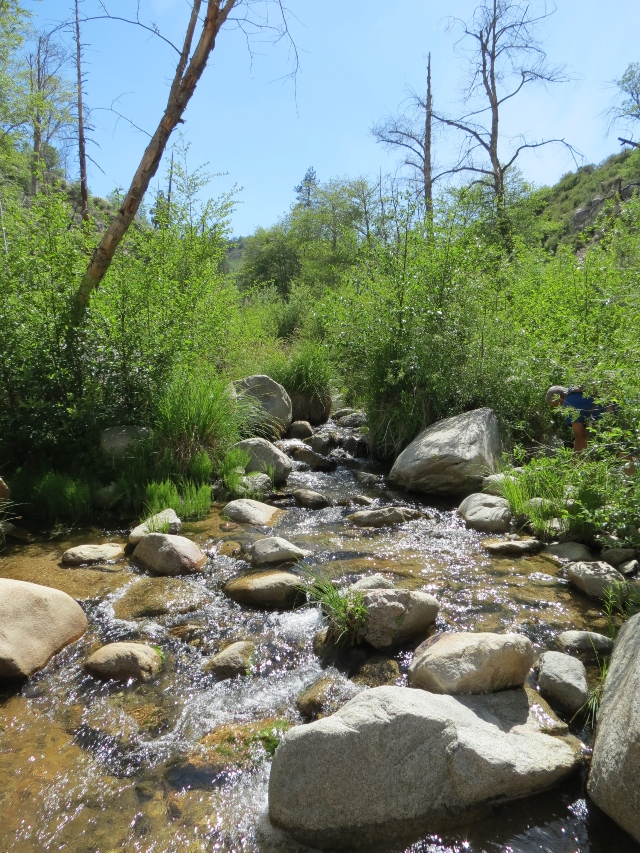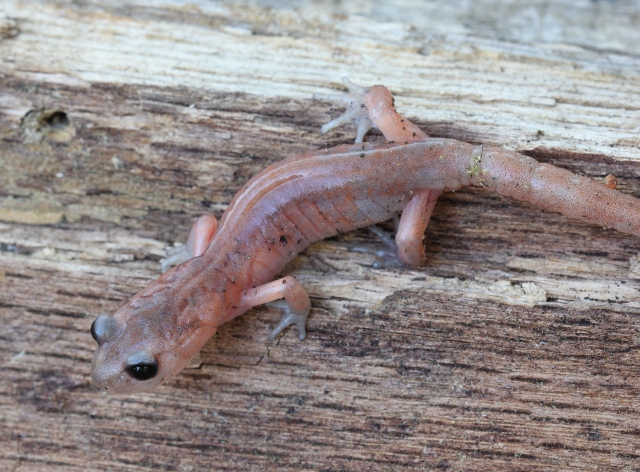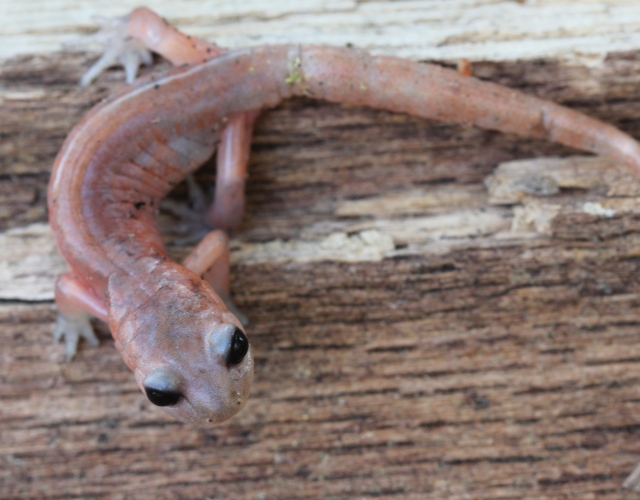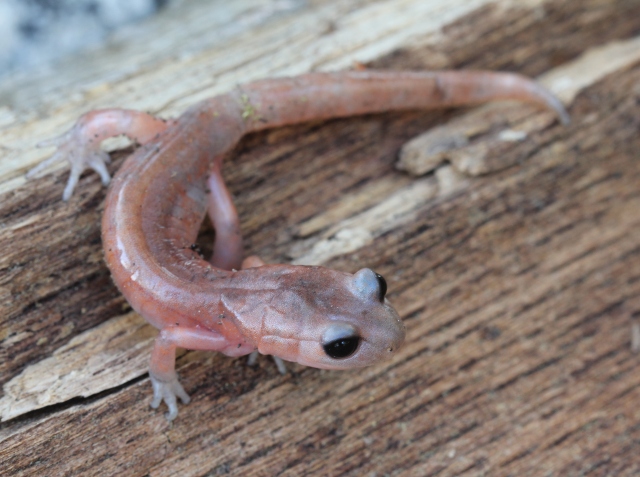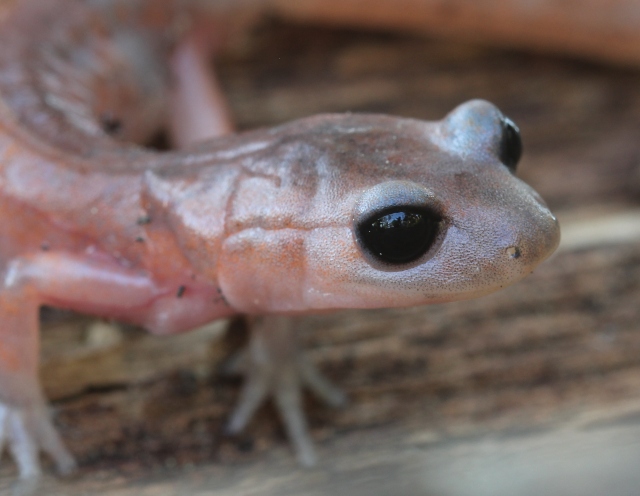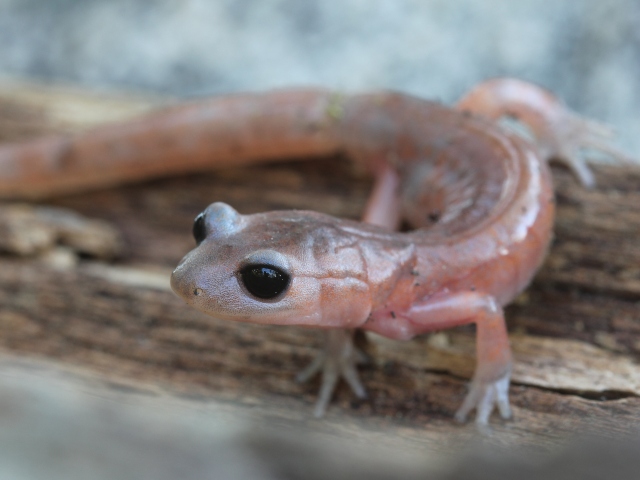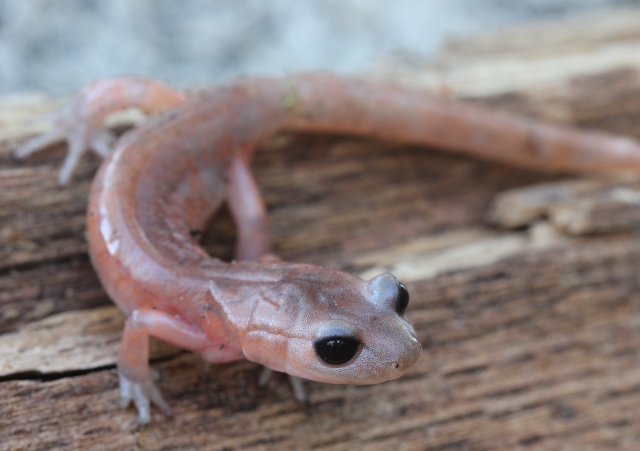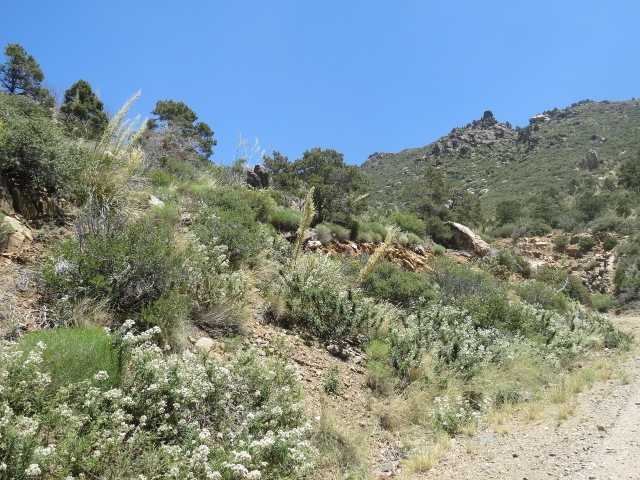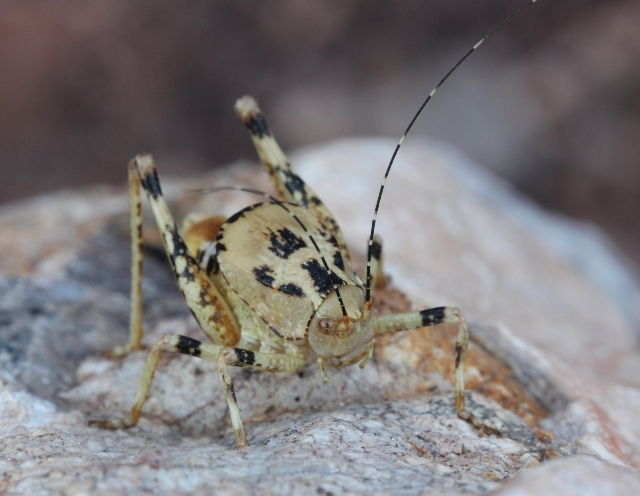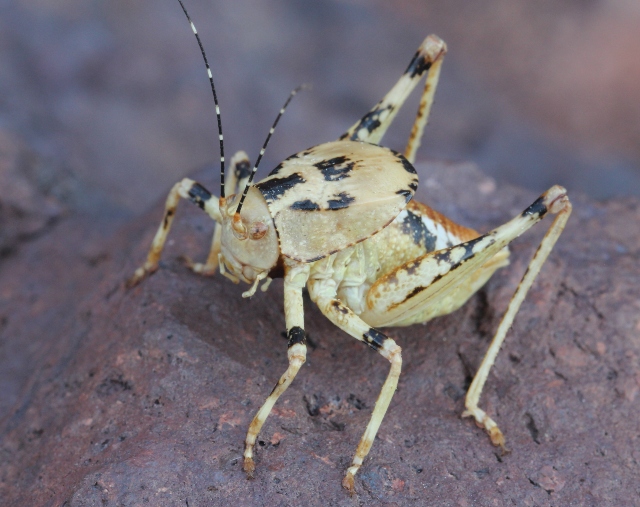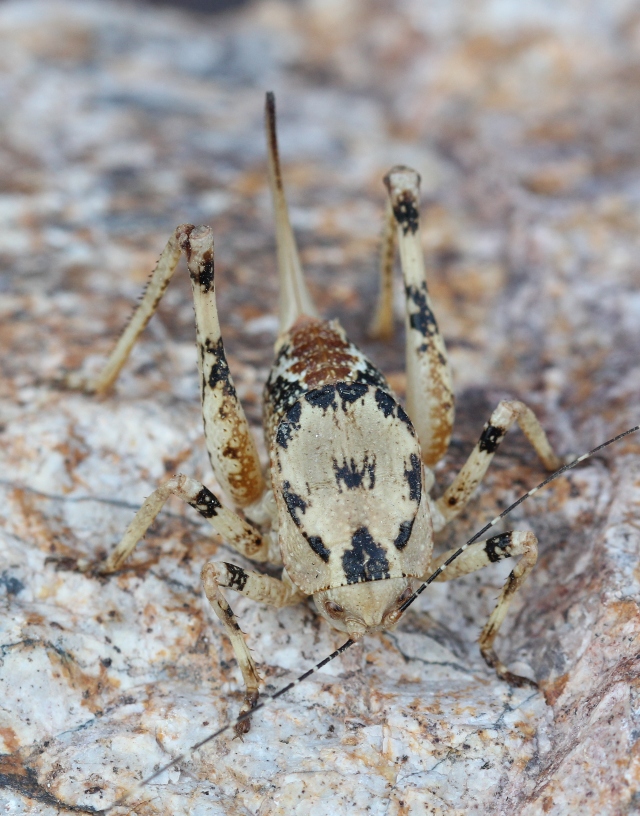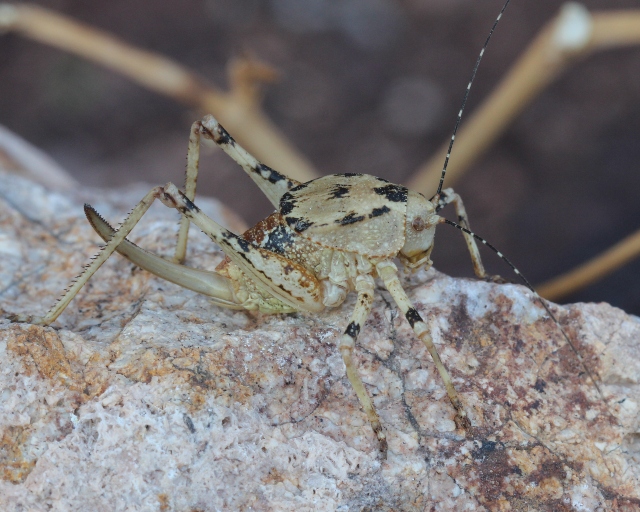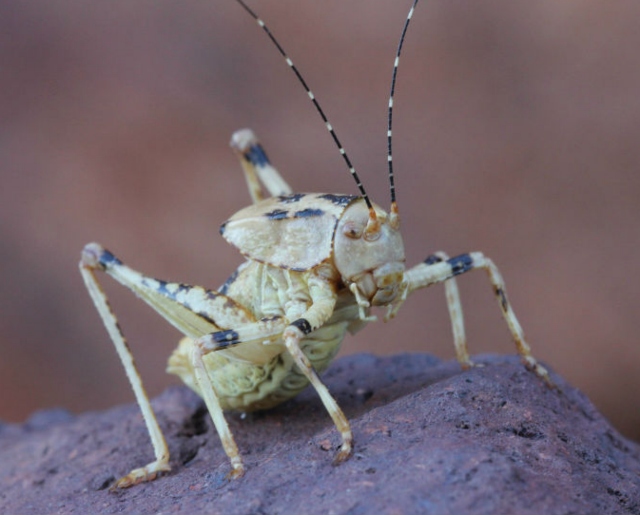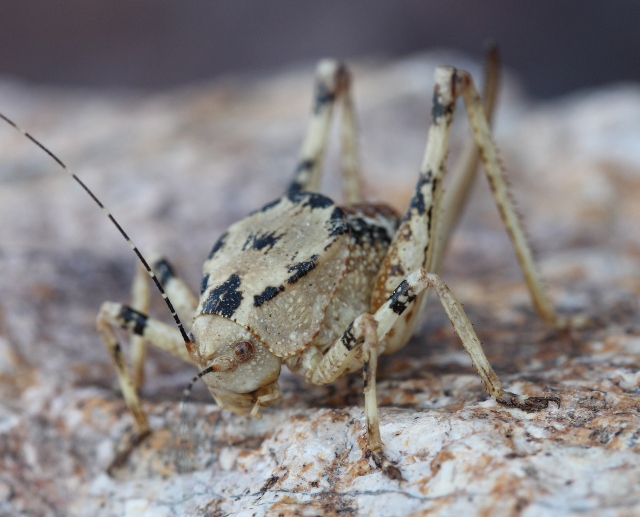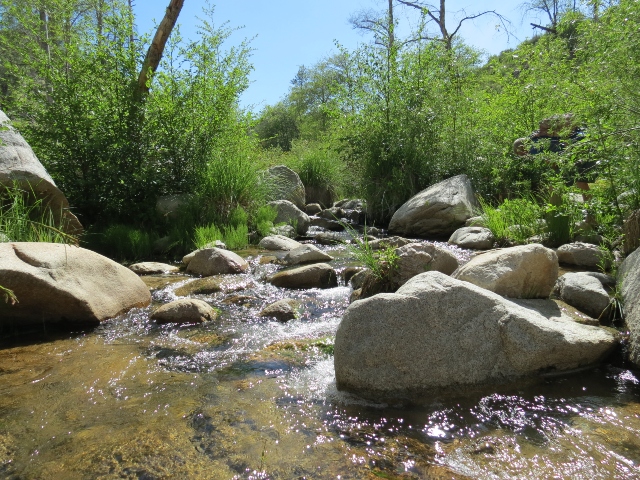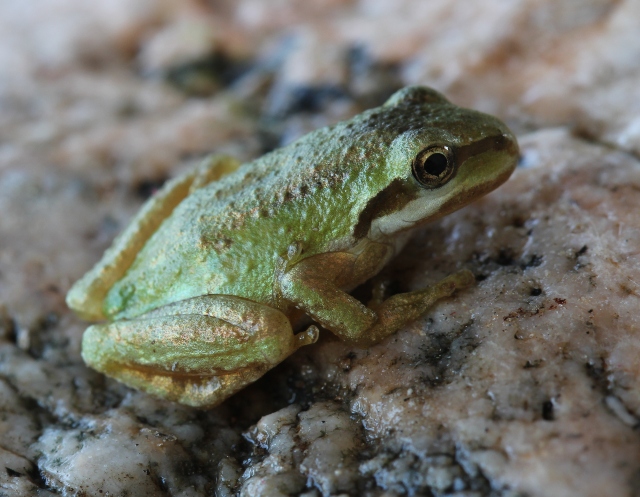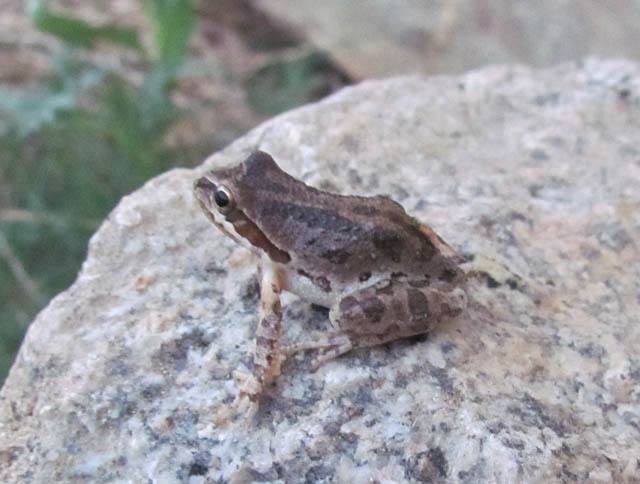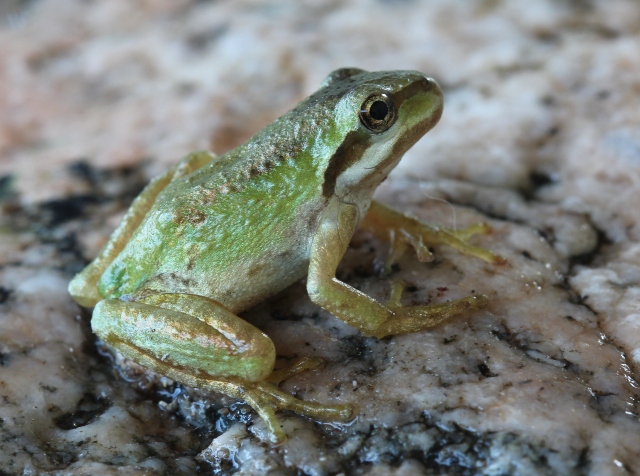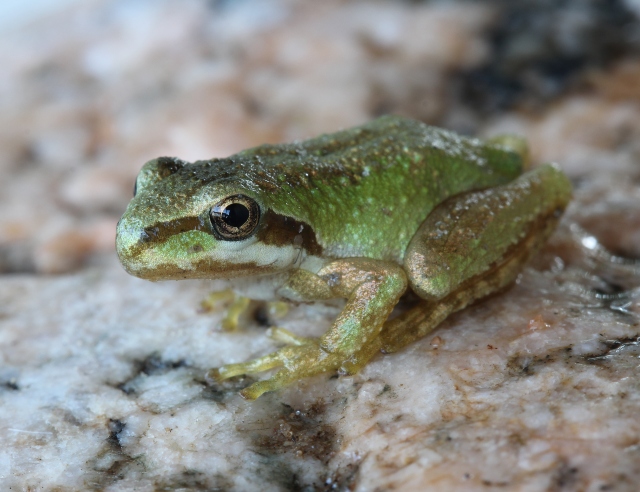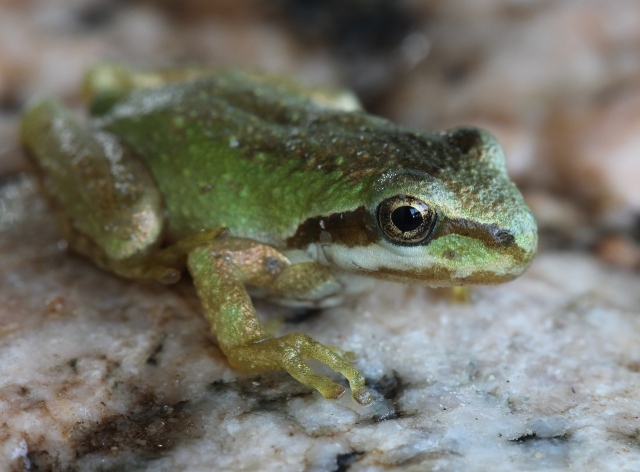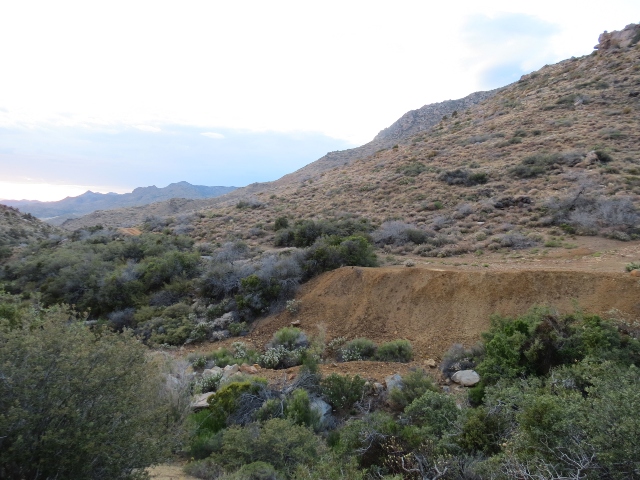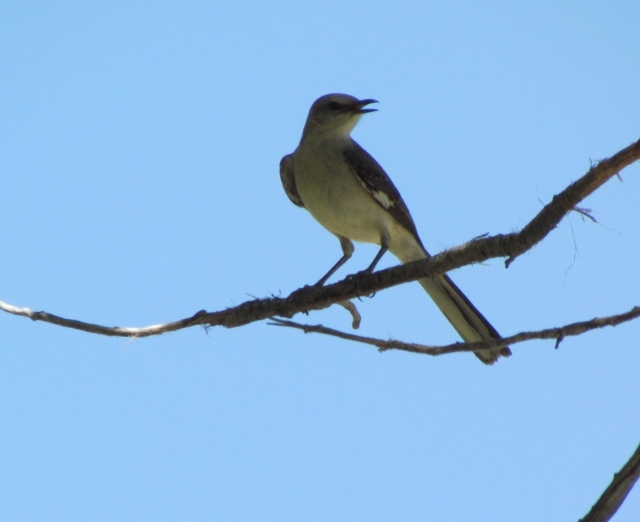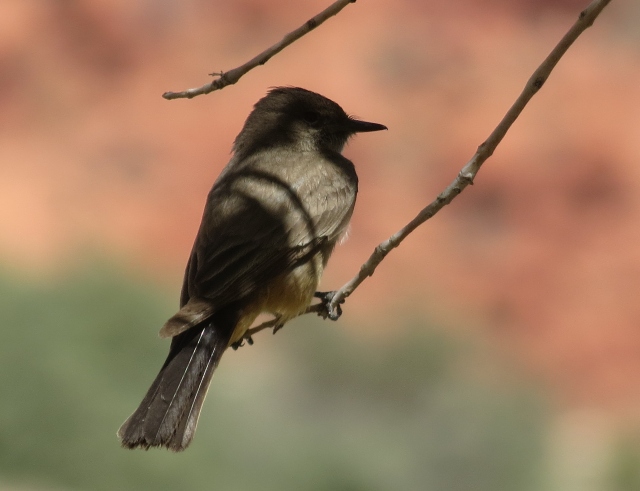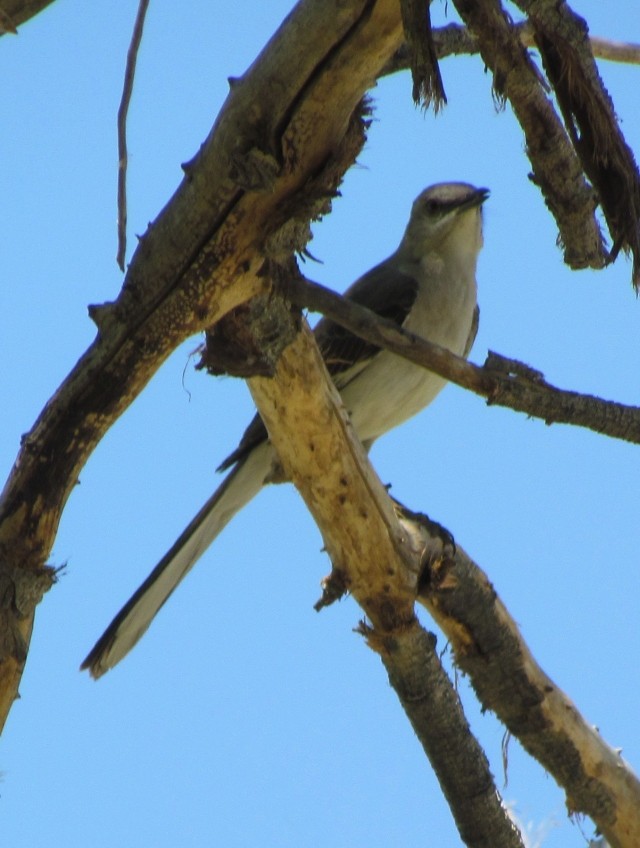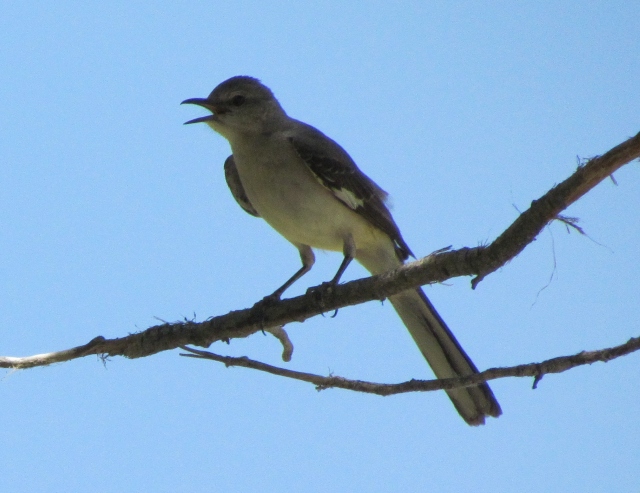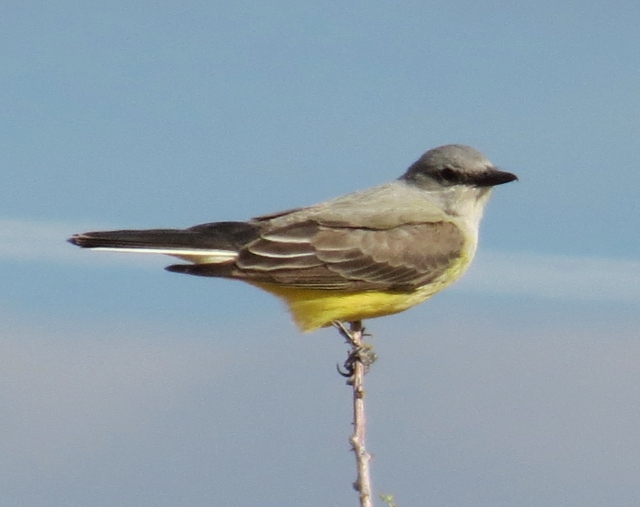This was a neat “ghost” version of what usually is a brightly colored amphibian. This is a type of lungless salamander that conducts respiration through its skin and the tissues lining its mouth. Being lungless requires it to live in damp environments and to move about only during times of high humidity.
The young develop in an egg and hatch directly into a tiny terrestrial salamander with the same body form as an adult. (They do not hatch in the water and begin their lives as tiny swimming larvae breathing through gills like some other types of salamanders.)
When it feels severely threatened by a predator, an Ensatina may detach its tail from its body to distract the predator. The tail moves back and forth on the ground to attract the predator while the Ensatina slowly crawls away to safety. The tail can be re-grown. The tail also contains a high density of poison glands. When disturbed, an Ensatina will stand tall in a stiff-legged defensive posture with its back swayed and the tail raised up while it secretes a milky white substance from the tail, swaying from side to side.
Monterey Ensatinas eat a wide variety of invertebrates. They expel their relatively long, sticky tongues to capture the prey and pull it back into their mouth where it is crushed and killed, and then swallowed. Typically feeding is done using sit-and-wait ambush tactics, but sometimes Ensatinas will slowly stalk their prey.
This creature inhabits moist, shaded evergreen and deciduous forests and oak woodlands, mixed grassland, and chaparral. It often find it under rocks, logs, other debris, especially bark that has peeled off and fallen beside logs and trees.
Ensatinas have several subspecies. They have been described as a “ring species” in the mountains surrounding the Californian Central Valley. The complex population of subspecies forms a horseshoe-shape around the mountains.
Finding this neat amphibian was definitely a herping highlight of my visit to southern California.

